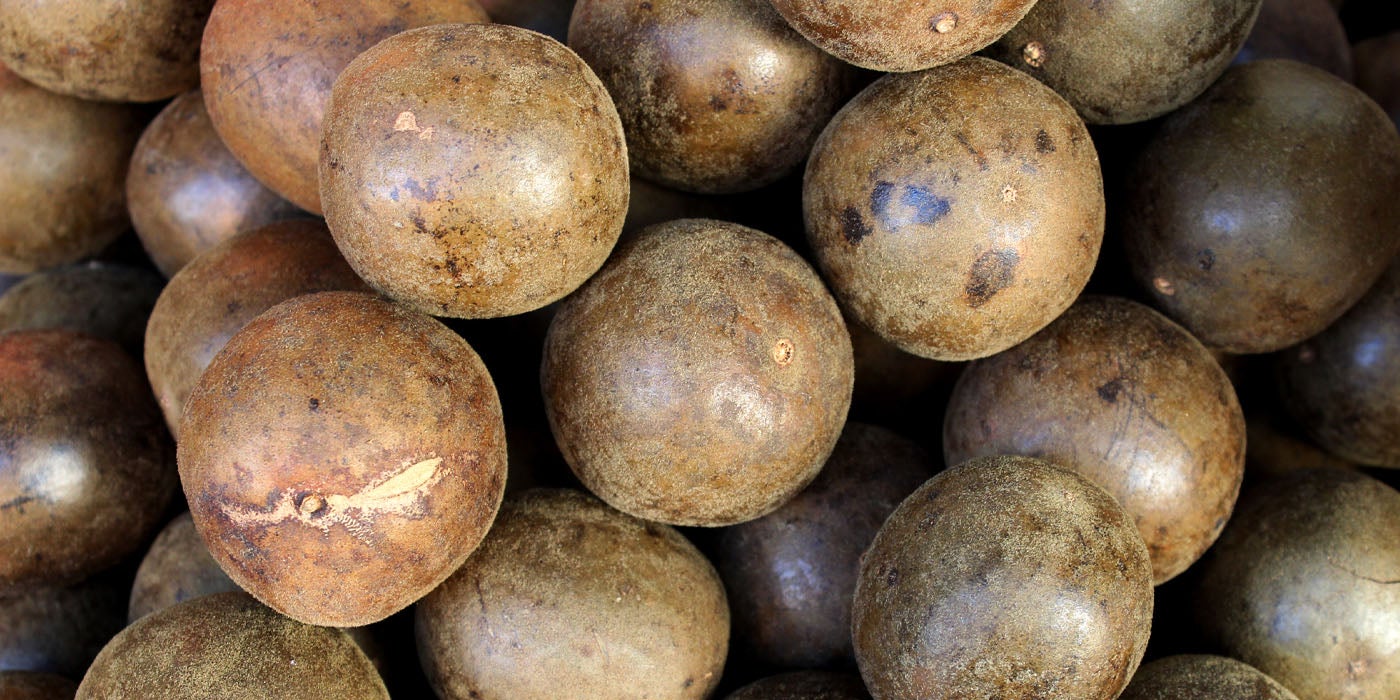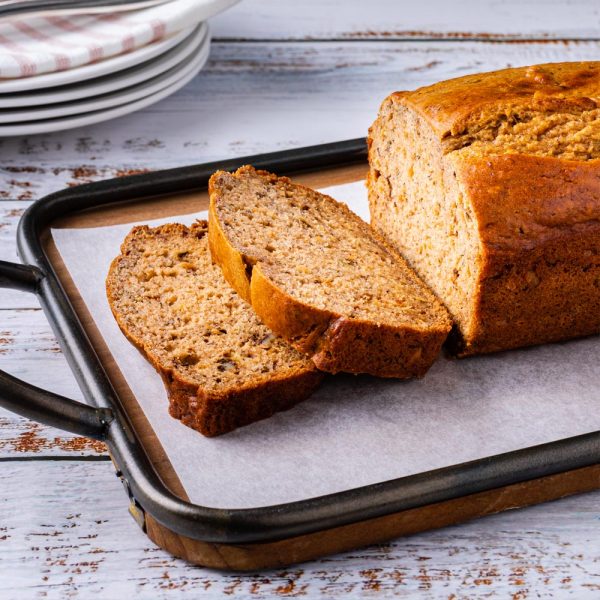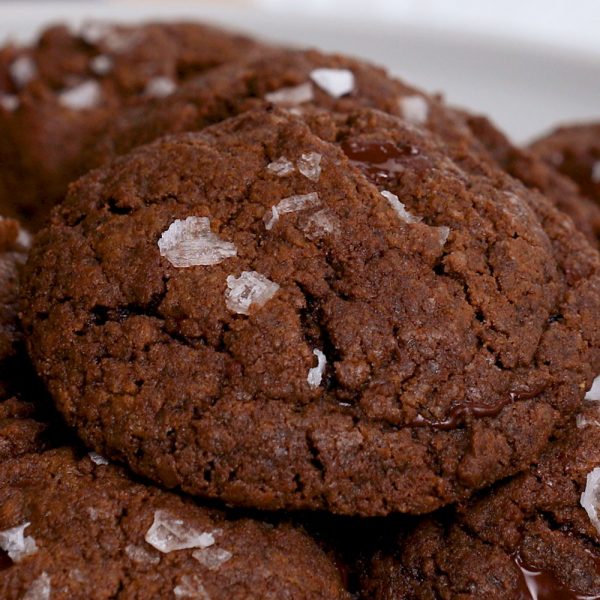Everything You Need To Know About Monk Fruit
Discover the naturally sweet taste of this delicious new Keto-friendly sweetener.
September 27, 2021
It’s no accident that monk fruit has become one of the world’s most popular keto sweeteners. It’s great for baking, great for drinks, and contains zero calories.
If you don’t love the aftertaste of other keto-friendly sweeteners, monk fruit might be the sweetener for you. It’s almost indistinguishable from sugar. Do a blind taste test and you might be stumped.
Or just swap in Splenda Monk Fruit Sweetener one for one into all your favorite recipes. When you notice your family scrambling for seconds, you’ll know you’ve found a winner.
You’ll learn how to use monk fruit (including recipes) at the end of this article. But first, let’s cover the basics of this natural sweetener.
What Is Monk Fruit?

Monk fruit is a gourd-like plant native to China and Thailand. It’s also known as luohan guo or Siraitia grosvenorii, but we’ll just call it monk fruit.
When people talk about monk fruit as a sweetener, they’re talking about monk fruit extract. To create the extract, the fruit is steeped in water, then the water is filtered and purified to draw out the sweetness.
Monk fruit extract is much sweeter than sugar.1 What makes monk fruit so sweet? Compounds called mogrosides.
Of the mogrosides in monk fruit, mogroside V is the most important. It lends the most sweetness and it’s probably responsible for monk fruit’s health benefits.1 More on those later.
Monk fruit has a long history. Prized in China for centuries, monk fruit was traditionally used for fevers, hot flashes, or other heat-induced ailments.2
Monk fruit came to the United States in the early 20th century. Today, it continues to grow in popularity as a low-carb sweetener.
Monk Fruit vs. Sugar
Monk fruit is a sugar substitute. But why substitute sugar in the first place?
For one, sugar isn’t low-carb or keto-friendly. Consuming added sugar (as sucrose or high fructose corn syrup) inhibits the fat-burning state called ketosis.
Why? Because eating sugar raises blood sugar and insulin levels. In turn, high insulin levels send a clear message to your cells: “Time to store fat!”.3
Sugar isn’t just keto kryptonite, but it’s also easy to overeat. Added sugar is the main source of empty calories in the Standard American Diet—about 15 or 16 teaspoons worth per day!4 Most of these calories come from sugar-sweetened beverages.5 The American Heart Association (AHA) recommends Americans limit sugar intake to 6 to 9 teaspoons per day. (6 for women and 9 for men).6

Refined sugar is a large contributor to the diabetes and obesity epidemic.5 Remove those empty calories and you’d have less overeating, less metabolic dysregulation, and less runaway weight gain.
Monk fruit, on the other hand, has all of the upsides of sugar (taste and baking utility) with none of the downsides. In fact, it has health benefits.
Monk Fruit Health Benefits
Researchers haven’t studied monk fruit as extensively as other low-carb sweeteners like stevia and erythritol, but the research that does exist is promising.
#1: Doesn’t raise blood sugar7 (compared to sugar)
When someone has type 2 diabetes, they can’t properly regulate their blood sugar levels. This results in weight gain, impaired immunity, and an increased risk for chronic conditions like heart disease and cancer.8
Reducing blood sugar levels is the primary therapeutic goal of diabetes treatment. More and more, researchers and clinicians are turning to low-carb and ketogenic diets for this purpose.9
Monk fruit is a healthy addition to a low-carb diet. In one study, taking monk fruit didn’t raise blood sugar levels in healthy participants.10 Sugar, on the other hand, increased fasting blood sugar by 70% within 15 minutes.
#2: Antioxidant properties
Mogroside V is the active sweetening component in monk fruit. Along with adding sweetness, mogroside V has been shown (in a test tube, at least) to have antioxidant properties.11, 12
When a compound has antioxidant properties, it means it can neutralize reactive oxygen species (ROS). ROS are a byproduct of normal metabolism, but excess ROS have been linked to chronic disease and accelerated aging.13
#3: May help with weight loss
Like we talked about earlier, excess sugar consumption drives weight gain. Replacing that sugar with a zero-sugar sweetener like monk fruit is a smart addition to a healthy weight management program.
Monk Fruit Safety and Side Effects
Monk fruit has been generally recognized as safe (GRAS) by the FDA.14 This means it’s deemed safe for human consumption in normal amounts.
Centuries of Chinese history also bolster the case for monk fruit’s safety and non-toxicity. There are no reported side effects from consuming monk fruit.
How To Use Monk Fruit
Break out Splenda Monk Fruit Sweetener to sweeten drinks, baked goods, and frozen desserts in a keto-friendly way. Here are some ideas.
Monk Fruit for Baking
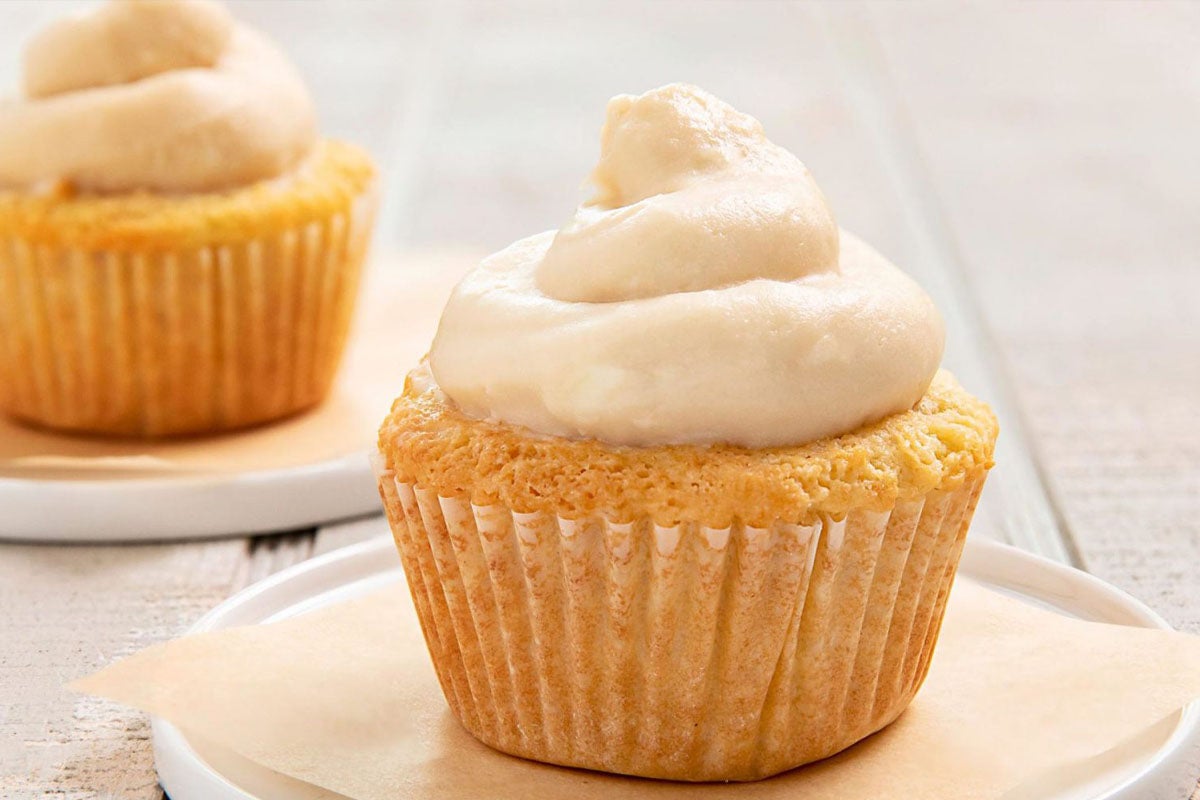
Monk fruit is ideal for baking. You can use it anywhere you’d use sugar without sacrificing taste or texture.
Monk fruit is especially well suited to cookies, cakes, and bread. It has a subtle natural brown sugar-like flavor that works well in banana, pumpkin bread, and muffin recipes.
Here are some monk fruit recipes to get you started:
Pro tip: Use Splenda Monk Fruit Sweetener for a 1:1 swap with sugar in all your baking adventures. It’s just monk fruit plus another keto-friendly sweetener: erythritol.
Monk Fruit for Drinks

Many people use monk fruit to sweeten beverages like tea, coffee, and smoothies. Splenda Monk Fruit Liquid Sweetener and Splenda Monk Fruit Packets are ideal for sweetening drinks.
Monk Fruit for Frozen Foods
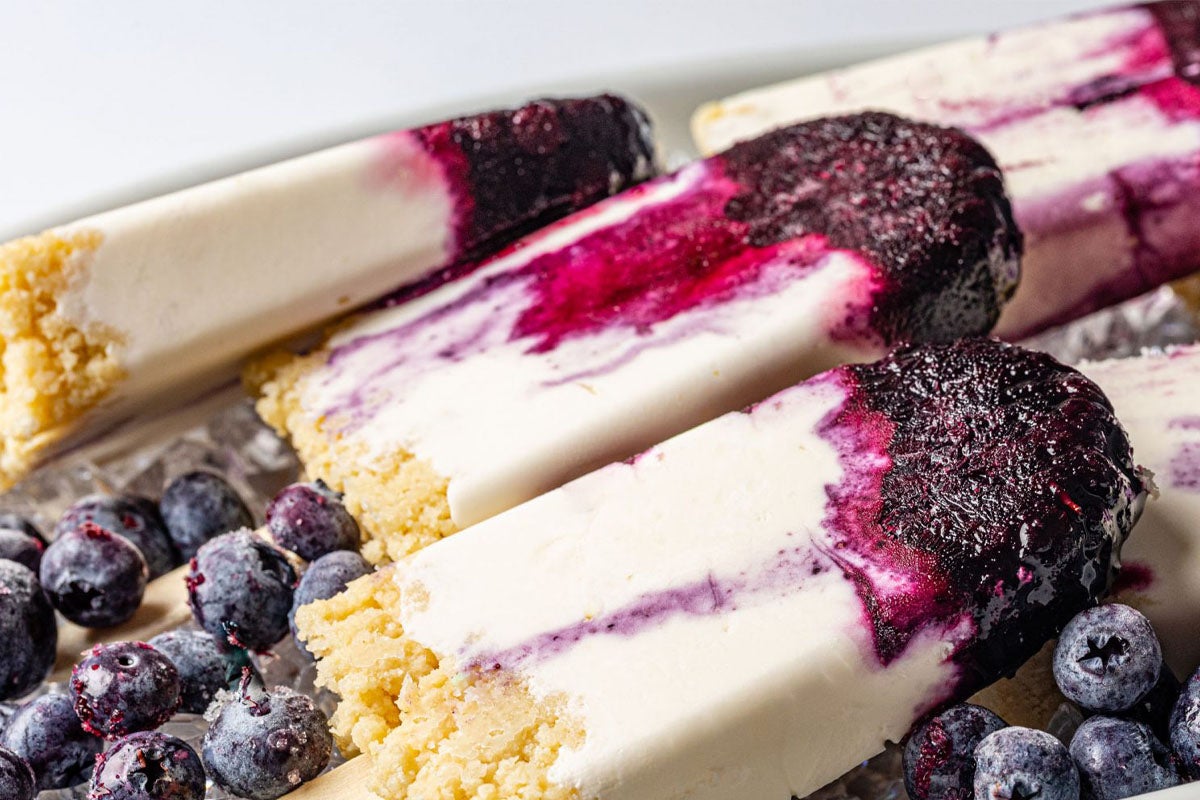
If you’re going to make frozen goods, it’s best to dissolve the monk fruit in liquid first. This ensures your frozen treat will be smooth and creamy.
Should You Use Monk Fruit?
If you’re looking for a zero-carb sweetener that tastes like sugar, monk fruit is for you. It doesn’t raise blood sugar, has interesting antioxidant properties, and is perfectly compatible with the keto diet. Give monk fruit a try and see what you think.
Written by Brian Stanton, author of Keto Intermittent Fasting, a certified health coach, and a leading authority on the keto diet. Follow Brian’s work by visiting his website at brianjstanton.com.
Recipes Make with Splenda Monk Fruit
Try Splenda Monk Fruit Sweeteners
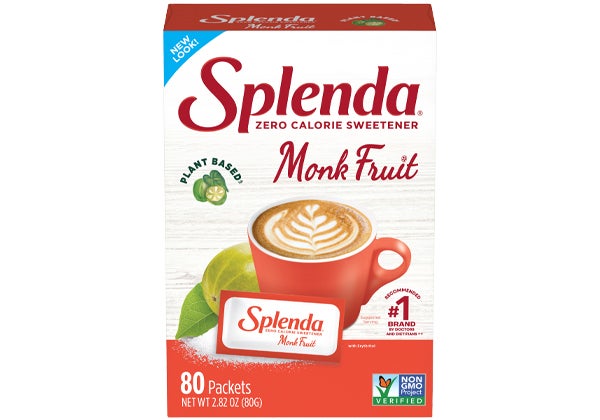
Splenda® Monk Fruit Sweetener Packets
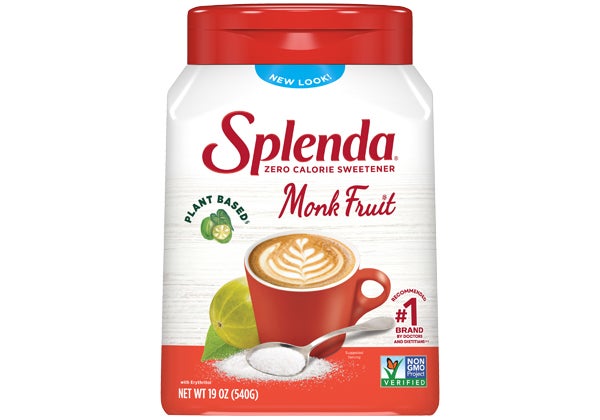
Splenda® Monk Fruit Sweetener, 19 oz Jar
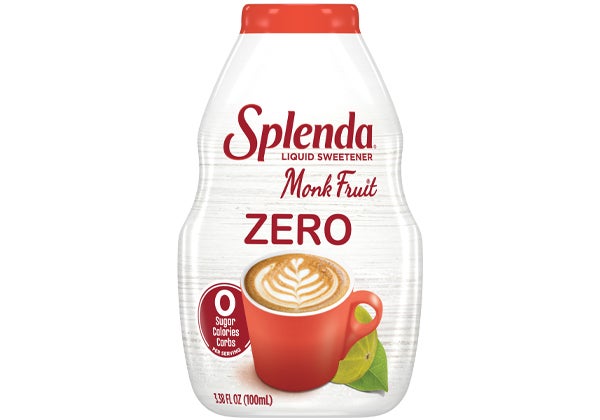
Splenda® Monk Fruit Sweetener, 3 lb Bag
1 Itkin, Maxim et al. “The biosynthetic pathway of the nonsugar, high-intensity sweetener mogroside V from Siraitia grosvenorii.” Proceedings of the National Academy of Sciences of the United States of America vol. 113,47 (2016): E7619-E7628. doi:10.1073/pnas.1604828113 2 Dharmananda S (2004). “Luo han guo: Sweet fruit used as sugar substitute and medicinal herb“. Institute for Traditional Medicine Online. 3 Masood W et al. “Ketogenic Diet”. In: StatPearls [Internet]. Treasure Island (FL): StatPearls Publishing; 2020 Jan 4 Scientific Report of the 2020 Dietary Guidelines Advisory Committee Advisory Report to the Secretary of Agriculture and Secretary of Health and Human Services. 2020. 5 Malik, Vasanti S et al. “Sugar-sweetened beverages, obesity, type 2 diabetes mellitus, and cardiovascular disease risk.” Circulation vol. 121,11 (2010): 1356-64. 6 Added Sugars. American Heart Association, Heart.org. 2018. 7 Tey, S., Salleh, N., Henry, J. et al. Effects of aspartame-, monk fruit-, stevia- and sucrose-sweetened beverages on postprandial glucose, insulin and energy intake. Int J Obes 41, 450–457 (2017). https://doi.org/10.1038/ijo.2016.225 8 Goyal R, Jialal I. Diabetes Mellitus Type 2. [Updated 2020 Nov 20]. In: StatPearls [Internet]. Treasure Island (FL): StatPearls Publishing; 2021 Jan-. Available from: https://www.ncbi.nlm.nih.gov/books/NBK513253/ 9 Westman, Eric C et al. “Implementing a low-carbohydrate, ketogenic diet to manage type 2 diabetes mellitus.” Expert review of endocrinology & metabolism vol. 13,5 (2018): 263-272. doi:10.1080/17446651.2018.1523713 10 EFSA Panel on Food Additives and Flavourings (FAF) et al. “Safety of use of Monk fruit extract as a food additive in different food categories.” EFSA journal. European Food Safety Authority vol. 17,12 e05921. 11 Dec. 2019, doi:10.2903/j.efsa.2019.5921 11 Chen, W J et al. “The antioxidant activities of natural sweeteners, mogrosides, from fruits of Siraitia grosvenori.” International journal of food sciences and nutrition vol. 58,7 (2007): 548-56. doi:10.1080/09637480701336360 12 Ban, Qingfeng, et al. “Physiochemical, rheological, microstructural, and antioxidant properties of yogurt using monk fruit extract as a sweetener.” Journal of Dairy Science 103.11 (2020): 10006-10014. https://doi.org/10.3168/jds.2020-18703 13 Jakubczyk, Karolina et al. “Reactive oxygen species – sources, functions, oxidative damage.” Polski merkuriusz lekarski : organ Polskiego Towarzystwa Lekarskiego vol. 48,284 (2020): 124-127. 14 Liauchonak, Iryna et al. “Non-Nutritive Sweeteners and Their Implications on the Development of Metabolic Syndrome.” Nutrients vol. 11,3 644. 16 Mar. 2019, doi:10.3390/nu11030644

